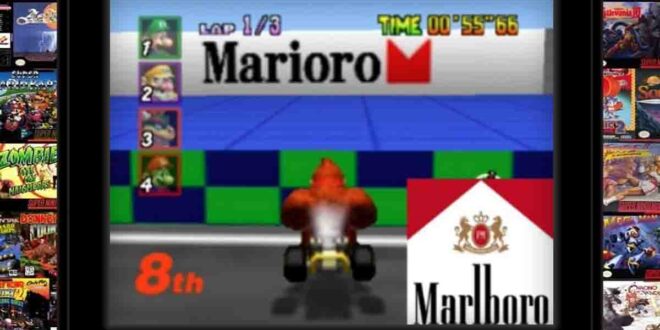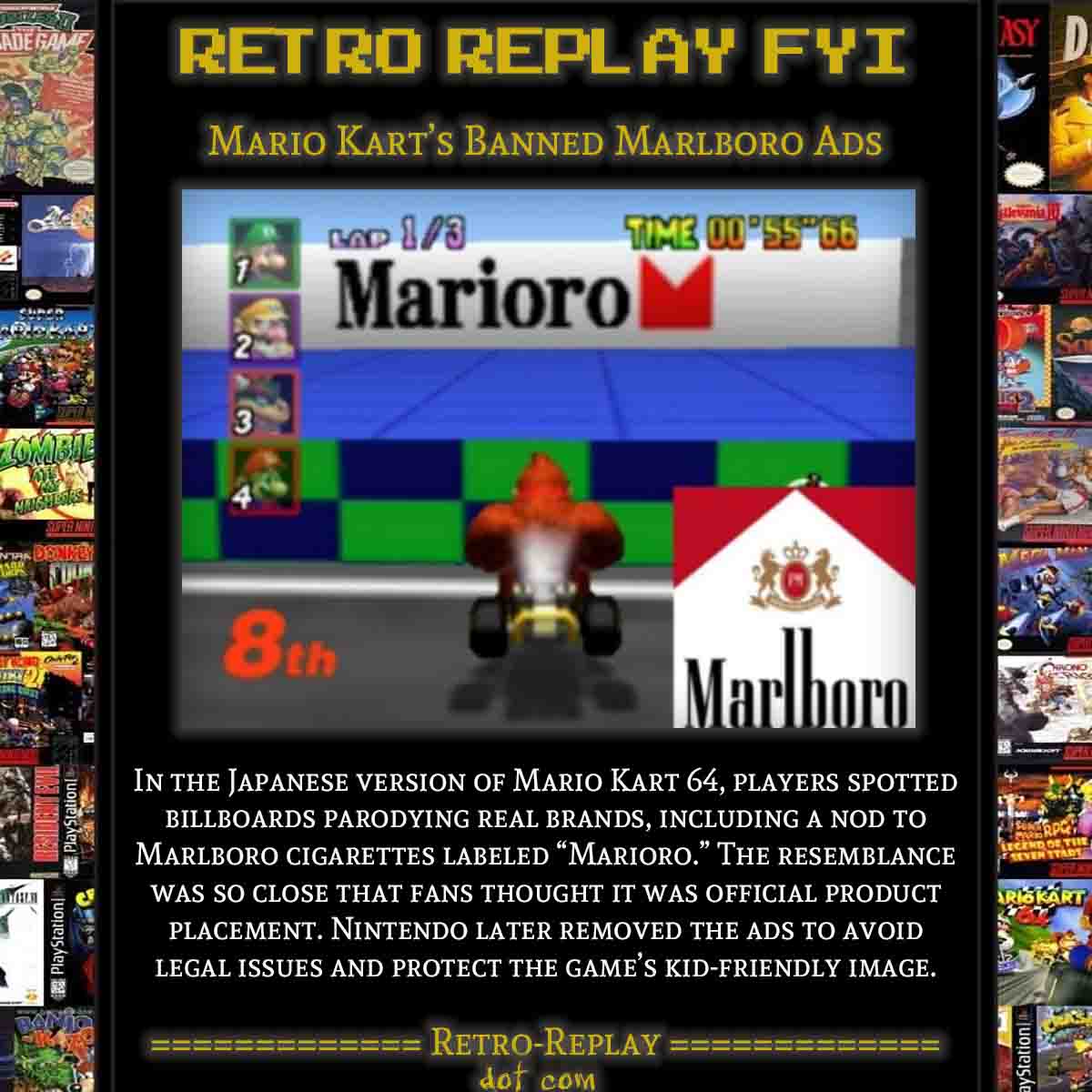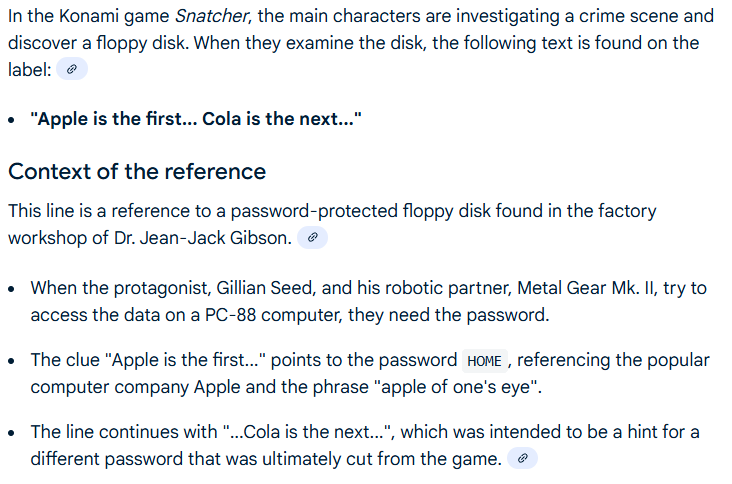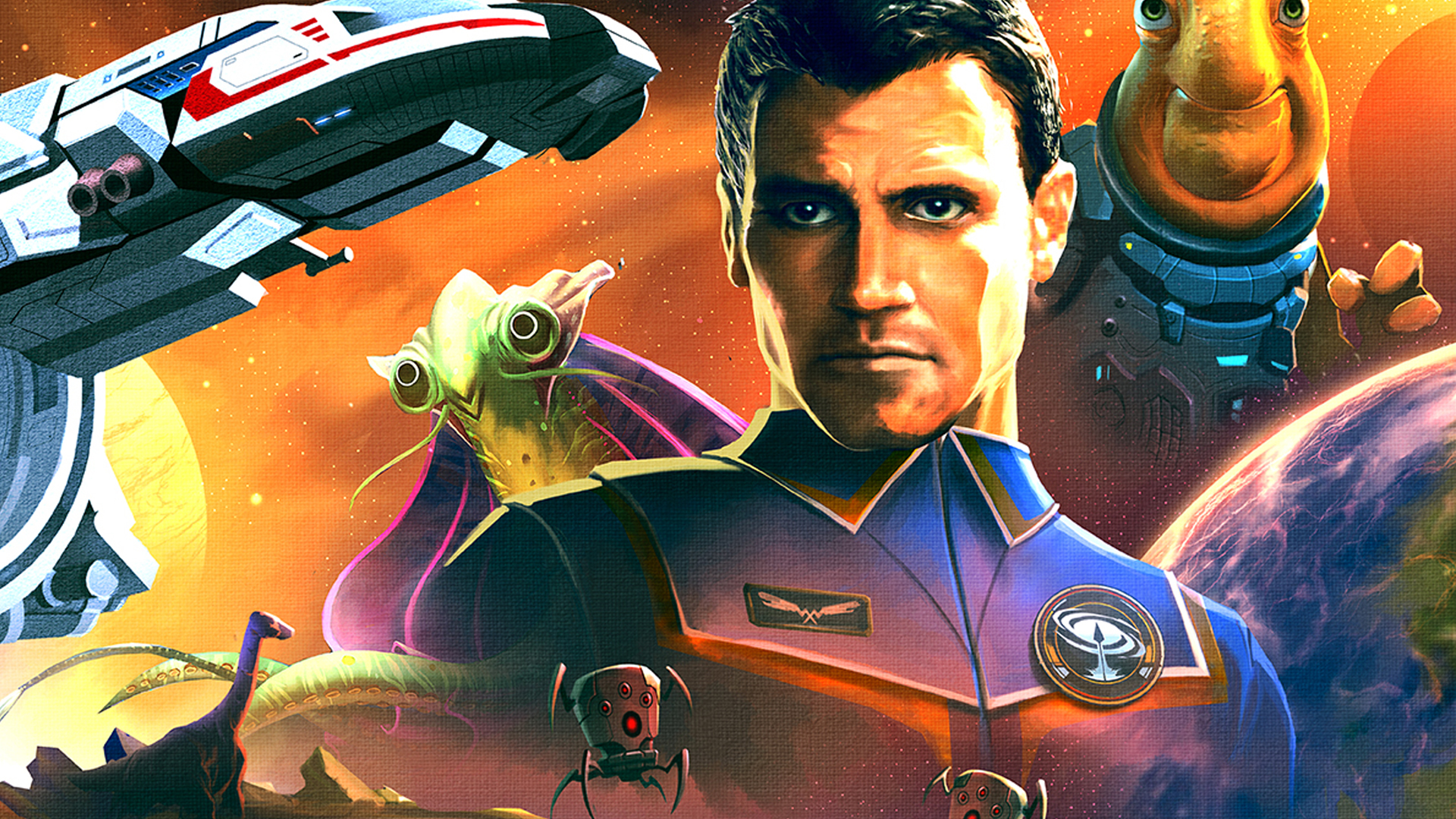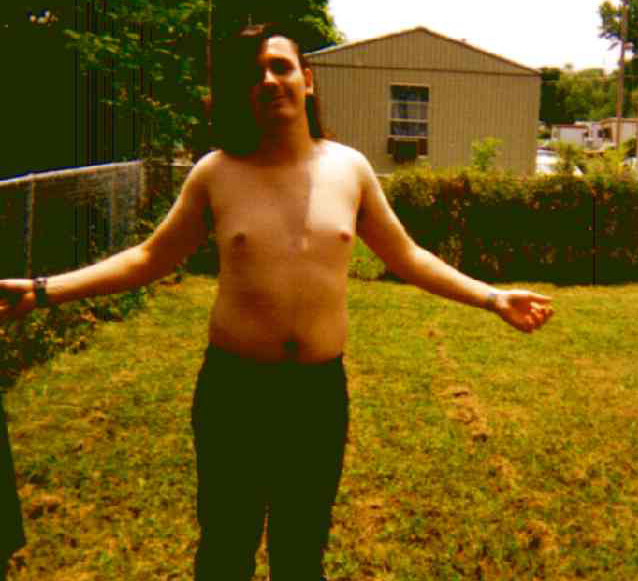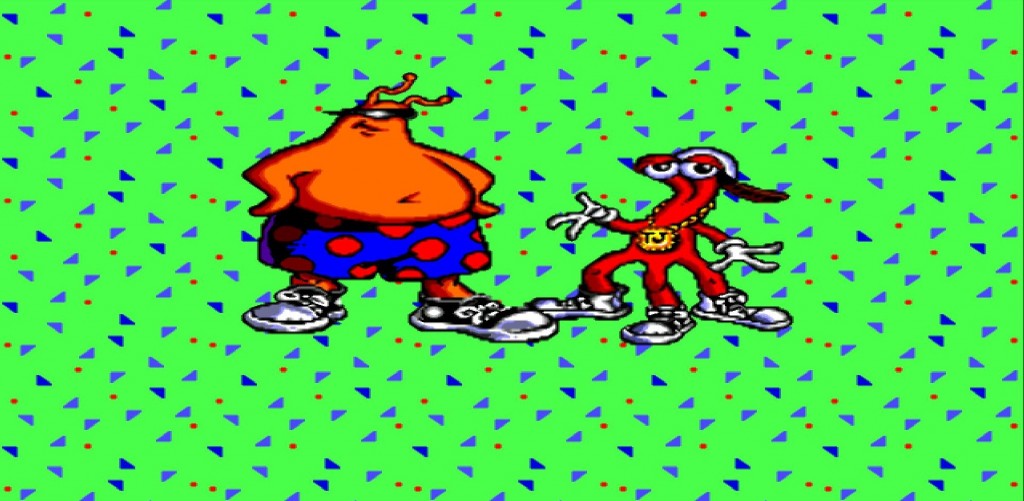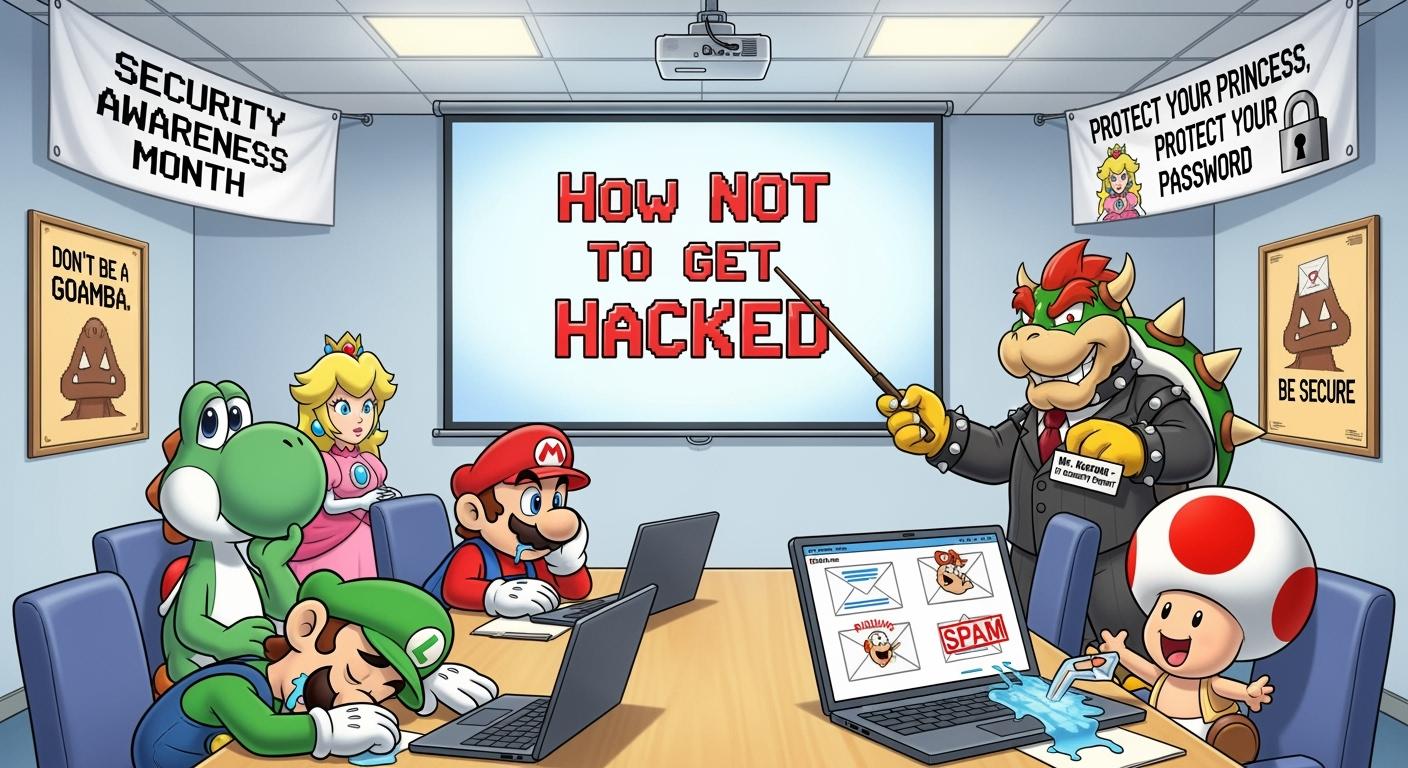If you grew up tearing through Rainbow Road and tossing banana peels in Mario Kart 64, you probably never imagined that your favorite racing game once flirted with cigarette advertising. But that’s exactly what happened in the early versions of the game. Hidden in plain sight among the trackside billboards was a cheeky parody of Marlboro cigarettes, rebranded as “Marioro.” The red-and-white logo looked unmistakably similar to the real-life tobacco company’s branding, and it stirred up plenty of confusion among fans who wondered whether Nintendo had actually teamed up with Big Tobacco.
(HEY YOU!! We hope you enjoy! We try not to run ads. So basically, this is a very expensive hobby running this site. Please consider joining us for updates, forums, and more. Network w/ us to make some cash or friends while retro gaming, and you can win some free retro games for posting. Okay, carry on 👍)
While most Western players never saw these textures, they appeared in Japanese promotional and test builds of Mario Kart 64 and even in some prototype versions of Super Mario Kart years earlier. According to research compiled by The Cutting Room Floor, these trackside ads were meant as tongue-in-cheek placeholders referencing popular brands that Japanese audiences would recognize. In Japan’s advertising culture of the 1990s, parodying corporate logos in video games was fairly common, but once Nintendo prepared for global release, the tone changed entirely.
The Legal Smoke Screen
Nintendo of America had strict internal rules about what could appear in games targeted toward families. Just as they removed alcohol references from Punch-Out!! — where Vodka Drunkenski became Soda Popinski (read the full story here) — they also wanted to eliminate any suggestion of real-world tobacco or alcohol products from their flagship franchises. Legal experts within the company reportedly feared lawsuits from Philip Morris, the parent company behind Marlboro, or potential backlash from parents and watchdog groups.
A 1997 Next Generation magazine retrospective (archived at Archive.org) noted that Mario Kart 64 underwent several rounds of texture editing before its Western release, including the complete removal of any graphics that could imply sponsorships or brand tie-ins. Nintendo wanted Mario Kart to represent the purity of family fun — not the marketing excesses of Formula 1 or NASCAR.
I was just playing the Japanese version of Mario Kart 64 and noticed this interesting difference in the signage on Royal Raceway. The Japanese version contains a sign that looks like the Marlboro cigarettes logo. pic.twitter.com/5yxb4GeOb5
— NES Professor ✝️🕊️🏴☠️ (@NES_Professor) June 22, 2025
Parody, Branding, and the 1990s Game Scene
This was not an isolated case. The early 1990s were full of examples of Japanese developers referencing real-world products to create a sense of authenticity. Sega’s Virtua Racing had tracks inspired by real advertising billboards, Wave Race 64 featured banners that looked suspiciously like Kawasaki logos, and Konami’s Snatcher even included nods to Apple and Coca-Cola before later editions edited them out. Parody and imitation were part of gaming culture, but the line between “homage” and “infringement” grew thinner as games went global.
Nintendo’s response was simple: scrub it all clean. By the time Mario Kart 64 hit shelves internationally, all of the “Marioro” textures were replaced with Nintendo-themed or fictional logos. What was left was the same great racing experience — just without the smell of smoke in the air.
Why It Still Matters
Stories like this reveal a lot about how Nintendo balanced creativity and caution in its early years of 3D gaming. The company’s global expansion forced it to become not only a creator of fun but also a guardian of its family-friendly image. What once might have been seen as a harmless in-joke could quickly become a public relations nightmare when released internationally.
The “Marioro” billboard remains one of the most fascinating curiosities from the Mario Kart archives, a relic of an era when developers experimented more freely and legal departments slept less soundly. It reminds us that behind every track, texture, and Easter egg, there’s a story of risk, restraint, and cultural translation.
 Retro Replay Retro Replay gaming reviews, news, emulation, geek stuff and more!
Retro Replay Retro Replay gaming reviews, news, emulation, geek stuff and more!
